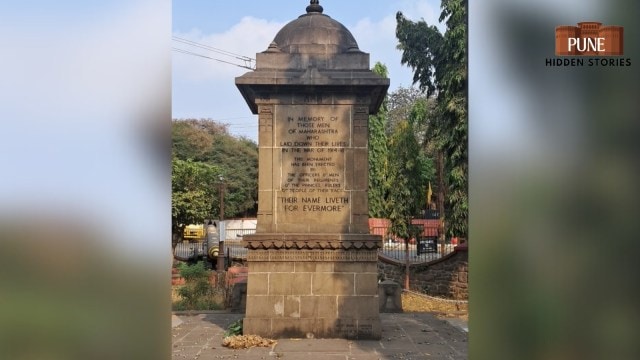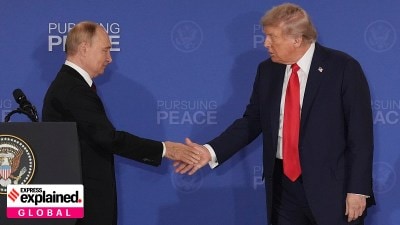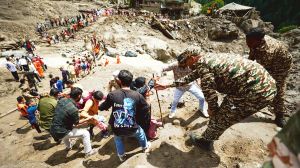Click here to join Express Pune WhatsApp channel and get a curated list of our stories
Hidden stories: How Pune’s Maratha War Memorial honours Indian soldiers’ sacrifices during World War I
According to historians, the foundation stone of Maratha War Memorial was laid by the Prince of Wales, Edward VIII
 The regiment that the Marathi troops served with during World War I is listed in the second English inscription. (Express Photo)
The regiment that the Marathi troops served with during World War I is listed in the second English inscription. (Express Photo)During the First World War (WWI) of 1914–18, more than a million Indian men served in the British Army. Fighting in various battlefields in Europe, the Middle East, and Africa claimed the lives of almost 70,000 people. In memory of the Indian soldiers who lost their lives while serving the King of another nation in distant places, there are now many memorials and plaques strewn over the subcontinent. Maratha War Memorial is one such monument from World War I located in the cantonment town of Pune in Maharashtra.
Widely unnoticed, the Maratha War Memorial is positioned at the convergence of Moledina and Dr Coyaji Roads, on a triangular garden spanning 5,000 square feet, near George Restaurant. Surrounded by dry grass, scattered shrubs, and tall, slender trees, it creates a modest yet dignified setting while standing as a stronghold of remembrance, honouring the valor and sacrifice of the martyrs who fell in the line of duty.
According to historians, the memorial dates back to 1921, with the foundation stone being laid by the Prince of Wales, Edward VIII.
“Originally located near Shaniwar Wada, at the site where the statue of Bajirao I now stands, it was transferred in 1931 to its current, more notable location,” said historian Mandar Lawate.
Two of the inscriptions on the memorial’s four sides are in English, and it is capped with a stone dome.
The English-language inscription at the front reads, “In memory of those men of Maharashtra who laid down their lives in the war of 1914-18. This monument has been erected by the officers and men of their regiments, the princes, rulers, and people of their race.” It ends with the well-known war phrase, “Their name liveth for evermore.”
The regiment that the Marathi troops served with during World War I is listed in the second English inscription. The Marathi translation of the inscription is displayed on the other two sides.
A small inscription at the base of the memorial credits architects Acott, Bhuta, and Carpenter for its design, with construction carried out by contractor Krishnaji Ramakrishna and Co. The foundation plaque is situated on the ground in front of the structure.
Three cannons are placed at each corner of the triangular island that houses the monument. The cannons were taken from the Marathas by the British and predate the memorial. A plaque beside the memorial describing one of the cannons placed at the corner of the garden stated, “This cannon is from the artillery of Mughal Emperor Aurangzeb. The name of this cannon is ‘Fateh Kusha,’ which means ‘One Which Opens the Gate of Victory.’ The full name and titles of Aurangzeb are inscribed on it. Muhammad Ali Arab cast this cannon in the year 1667/8 CE. Another inscription gives the weights of the iron cannonball and gunpowder as per Akbari standards to fire this cannon.” The memorial is look after Pune Cantonment Board.
Vansh Chauhan is an intern at The Indian Express
Click here to join Express Pune WhatsApp channel and get a curated list of our stories







